This is a continuation from Mr. Sims and the Summer of ’95 – Part 1.
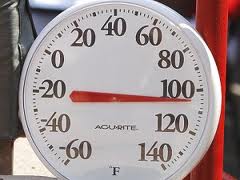 On Thursday, July 13, 1995 the high temperature at O’Hare Airport was 104 degrees.
On Thursday, July 13, 1995 the high temperature at O’Hare Airport was 104 degrees.
Mayor Daley was quoted as saying “It’s hot. It’s very hot. Yesterday we broke records. We all have our little problems, but let’s not blow it out of proportion. It is a crisis. It’s hot out there. We all walk out there. It’s very, very, very hot. It’s like getting heavy snow. It’s like getting real cold weather. Yes, we go to extremes in Chicago. And that’s why people love Chicago. We go to extremes.”
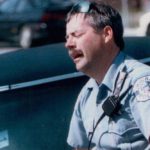 In reality, this was not recognized early as a potential public health disaster in the making. An unusual weather pattern combined with a limited and poor response to respond to calls and look after the elderly and areas with high poverty ultimately led to the deaths of over 700 people from across the county including over an estimated 400 people from the city itself.
In reality, this was not recognized early as a potential public health disaster in the making. An unusual weather pattern combined with a limited and poor response to respond to calls and look after the elderly and areas with high poverty ultimately led to the deaths of over 700 people from across the county including over an estimated 400 people from the city itself.
The chief medical examiner, Dr. Edmund Donoghue was called late Friday night to hear that over 40 cases were scheduled for Saturday. By the time he arrived on Saturday there were over 100 cases with more to come. In the days that followed Mayor Daley and Dr. Donoghue had a public battle about the office signing these cases out as “heat-related”. Shortly after this tragedy the CDC recognized Dr. Donoghue’s criteria, among those used by other medical examiners as standard definitions for classification of these deaths and within a few weeks Mayor Daley had public meetings to address the needs of city for cooling centers, neighbor watch programs and better response times from first responders to address this earlier in the future if needed
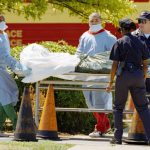
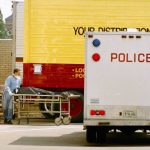 In order to deal with the aftermath of the deaths to process, move, autopsy and later process the deceased for burial the city enlisted the help of people performing community service in lieu of jail time that were enrolled in the Cook County Sheriffs Work Assistance Program.
In order to deal with the aftermath of the deaths to process, move, autopsy and later process the deceased for burial the city enlisted the help of people performing community service in lieu of jail time that were enrolled in the Cook County Sheriffs Work Assistance Program.
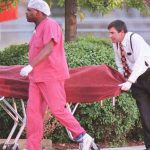 Mr. Sims was charged with removing bodies from the morgue to refrigerated trucks along the street as the capacity of the morgue was 200 and the number of bodies from the heat in addition to the “routine” cases overwhelmed the storage capacity. Mr. Sims was also charged with removing bodies as well from the trucks when funeral homes came to claim the deceased.
Mr. Sims was charged with removing bodies from the morgue to refrigerated trucks along the street as the capacity of the morgue was 200 and the number of bodies from the heat in addition to the “routine” cases overwhelmed the storage capacity. Mr. Sims was also charged with removing bodies as well from the trucks when funeral homes came to claim the deceased.
He did not fare well. The sights and smells of decomposing bodies by the dozens did Mr. Sims in and he was re-assigned to the Salvation Army truck passing out watered down lemonade and those combination stale/soggy peanut butter crackers you can only get off a Salvation Army truck.
In the days that followed he and his colleagues in the work assistance program appreciated their jobs in the truck away from and outside of the morgue.
I learned a lot and witnessed the aftermath of a natural disaster of sorts. I saw how medical examiners have to deal with the press and their own political colleagues when the finger-pointing started. I saw a city try to come together to understand what happened to prevent it from happening again. I saw how the national and international media camped out around the scene and try to gain information. I even made the 5:00 news one night with a short comment about witnessing such a huge volume of deaths in a short amount of time.
By the following week, my last on the one-month rotation, business had returned to normal. The refrigerated trucks were gone, as were the media. It was back to routine homicides, suicides and accidental deaths mixed in with unwitnessed deaths without a predisposing medical history. Had a chance to attend court with Dr. Donoghue on a murder case and watch him testify as to the autopsy findings, cause and manner of death.
I wrote a database application in DOS 3.1 that recorded the age, sex, race, location, rectal temperature and room temperatures when and where the bodies were found. That data was later used for publications in the New England Journal of Medicine, Journal of the American Medical Association, American Journal of Public Health and the forensic pathology literature.
I returned back to campus to finish fourth-year having crossed forensic pathology off my list as a career goal and wonder where Mr. Sims is 20 years later.
































